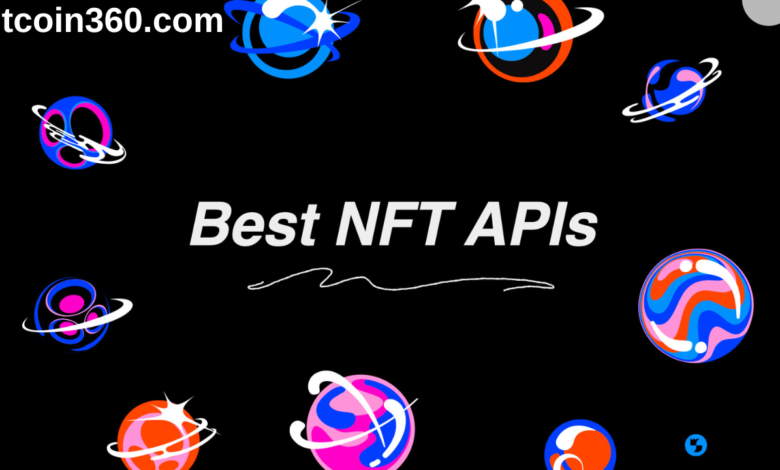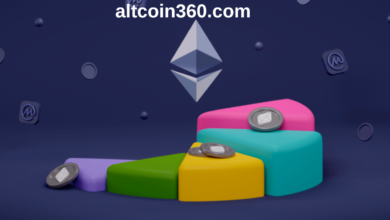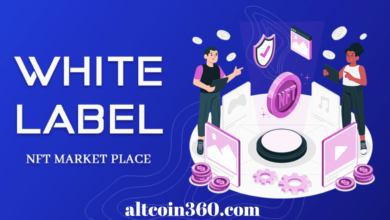The Best NFT APIs: Unleashing the Power of the Blockchain

Best NFT APIs
Best NFT APIs Non-fungible tokens (NFTs) have taken the world by storm, revolutionizing the way we perceive and exchange digital assets. These unique digital tokens, which are indivisible and represent ownership of specific digital or physical assets, have opened up new opportunities for creators, artists, collectors, and investors. NFTs are used to represent digital art, music, collectibles, virtual real estate, and much more, and they rely on blockchain technology to ensure authenticity, ownership, and scarcity. To interact with NFTs, developers and businesses often rely on NFT APIs to access the necessary data and functionality. In this article, we will explore the best NFT APIs available, highlighting their key features, use cases, and how they contribute to the NFT ecosystem.
1. OpenSea API
OpenSea is one of the largest and most well-known NFT marketplaces, offering a wide range of digital assets, from art to virtual real estate. OpenSea provides an API that enables developers to access various features of the platform, making it an invaluable resource for NFT development.
Key Features:
– Create, read, and manage NFT listings.
– Retrieve metadata about NFT assets.
– Access user information and wallet details.
– Explore trending collections and assets.
– Track transaction history and NFT ownership.
Use Cases:
– Developers can integrate OpenSea API into their applications, enabling users to buy, sell, and trade NFTs seamlessly.
– Artists and creators can use the API to showcase their digital art and manage their NFT listings on OpenSea.
– Researchers and data analysts can gather insights into NFT market trends and user behavior by accessing OpenSea’s data through the API.
2. Rarible API
Rarible is another popular NFT marketplace that focuses on empowering creators and users to mint and trade NFTs. Rarible provides an API that allows developers to interact with the platform programmatically.
Key Features:
– Mint new NFTs.
– List and manage NFTs for sale.
– Retrieve information about NFT collections.
– Access user profiles and transaction history.
– Engage with the Rarible DAO (Decentralized Autonomous Organization).
Use Cases:
– Artists and creators can mint NFTs using the Rarible API and customize their NFT listings.
– Developers can create NFT marketplaces and platforms that integrate with Rarible to leverage its features and user base.
– Users can use the API to explore, buy, and sell NFTs on the Rarible marketplace.
3. SuperRare API
SuperRare is a high-end NFT platform designed for digital artists. It offers an API that caters to artists and developers looking to work with premium NFTs and art.
Key Features:
– Create, list, and manage NFTs.
– Access artist profiles and their works.
– Retrieve transaction and auction data.
– Explore curated art collections.
– Get user data and wallet information.
Use Cases:
– Digital artists can use the SuperRare API to mint, showcase, and sell their artwork as NFTs.
– Developers can build art-focused applications and galleries that integrate SuperRare’s NFTs and data.
– Art collectors and enthusiasts can use the API to discover and invest in high-quality NFT art.
4. CryptoKitties API
CryptoKitties, one of the earliest NFT projects, gained fame for its collectible virtual cats. Although it started as a game, CryptoKitties offers an API that allows developers to interact with its NFT ecosystem.
Key Features:
– Breed, collect, and trade CryptoKitties.
– Access Kitty attributes and ownership details.
– Retrieve Kitty sales and auction data.
– Create and manage Kitty listings.
– Explore rare and exclusive Kitty traits.
Use Cases:
– Game developers can integrate the CryptoKitties API to add collectible NFTs to their gaming experiences.
– Collectors and breeders can manage their CryptoKitties and engage in trading using the API.
– Researchers can analyze the data on CryptoKitties to study NFT trends and economics.
5. NBA Top Shot API
NBA Top Shot is a unique NFT platform that focuses on basketball highlights. It offers an API for developers interested in creating applications around NBA moments and trading them as NFTs.
Key Features:
– Retrieve NBA moment data and metadata.
– List and manage moments for sale.
– Explore packs, challenges, and sets.
– Access user accounts and transaction history.
– Integrate with the NBA Top Shot marketplace.
Use Cases:
– Basketball fans and collectors can use the NBA Top Shot API to buy, sell, and trade iconic NBA moments.
– Developers can create basketball-related applications, games, and experiences by utilizing the API’s data and functionality.
– Sports analysts and researchers can study the NFT market’s impact on the sports industry by accessing NBA Top Shot data.
6. Chainlink VRF (Verifiable Random Function)
Chainlink VRF is a decentralized oracle network that provides randomness and verifiable randomness to smart contracts. While not a traditional NFT API, Chainlink VRF is essential for NFT projects that require random elements, such as generating rare attributes, loot, or card packs in NFT games.
Key Features:
– Generate random numbers and values.
– Ensure verifiability and trustworthiness in randomness.
– Access randomness on multiple blockchains.
– Integrate Chainlink VRF with smart contracts and NFT projects.
Use Cases:
– NFT game developers can use Chainlink VRF to create unique in-game items, attributes, and loot drops.
– NFT projects can enhance the rarity and uniqueness of their assets by incorporating verifiable randomness from Chainlink VRF.
– Developers building blockchain-based gambling or prediction markets can rely on Chainlink VRF for transparent and secure random outcomes.
7. IPFS (InterPlanetary File System)
The InterPlanetary File System (IPFS) is not a dedicated NFT API, but it plays a crucial role in NFT development by providing decentralized and efficient storage for NFT metadata and assets. Many NFT platforms and projects leverage IPFS to store and retrieve the digital files associated with NFTs.
Key Features:
– Decentralized file storage and retrieval.
– Content-addressable file system.
– Efficient data distribution and caching.
– Integration with various blockchain platforms.
Use Cases:
– NFT projects can use IPFS to store high-resolution images, 3D models, audio files, and other digital assets linked to NFTs.
– Developers can ensure the permanence and accessibility of NFT data by utilizing IPFS for content storage.
– Artists, creators, and collectors can rely on IPFS for a reliable and decentralized way to access and showcase NFT content.
Choosing the Right NFT API
Selecting the right NFT API depends on your specific needs and the nature of your NFT project. Consider the following factors when making your choice:
1. Platform Compatibility: Ensure that the API you choose is compatible with the blockchain platform your NFTs are built on. Common platforms include Ethereum, Binance Smart Chain, Flow, and more.
2. Use Case: Different APIs cater to different use cases. Choose an API that aligns with your project’s goals, whether it’s art curation, gaming, collectibles, or other NFT-related applications.
3. Community and Support: Look for APIs with active communities, developer resources, and support. A thriving community can provide
You may also like this: **Monkey NFT price: An Exploration of Monkey-Themed Collections and Price Dynamics**





Наша группа профессиональных исполнителей подготовлена подать вам перспективные системы утепления, которые не только подарят долговечную защиту от холодных воздействий, но и преподнесут вашему дому стильный вид.
Мы практикуем с современными материалами, обеспечивая долгосрочный запас службы и блестящие результаты. Теплоизоляция наружных поверхностей – это не только экономия энергии на обогреве, но и заботливость о окружающей среде. Энергосберегающие технологии, какие мы применяем, способствуют не только жилищу, но и сохранению природы.
Самое центральное: Стоимость утепления и штукатурки фасада у нас открывается всего от 1250 рублей за квадратный метр! Это доступное решение, которое метаморфозирует ваш домашний уголок в подлинный душевный уголок с минимальными издержками.
Наши проекты – это не просто утепление, это созидание площади, в где всякий элемент преломляет ваш индивидуальный модель. Мы рассмотрим все ваши желания, чтобы осуществить ваш дом еще более удобным и привлекательным.
Подробнее на https://www.ppu-prof.ru/
Не откладывайте дела о своем помещении на потом! Обращайтесь к профессионалам, и мы сделаем ваш жилище не только согретым, но и стильнее. Заинтересовались? Подробнее о наших трудах вы можете узнать на интернет-портале. Добро пожаловать в сферу комфорта и качества.
Наша команда квалифицированных специалистов готова предъявить вам прогрессивные подходы, которые не только ассигнуруют надежную покров от холода, но и дарят вашему домашнему пространству оригинальный вид.
Мы работаем с новыми материалами, ассигнуруя прочный период использования и превосходные результаты. Теплоизоляция облицовки – это не только экономия энергии на тепле, но и внимание о природной среде. Экономичные разработки, какие мы внедряем, способствуют не только твоему, но и сохранению природной среды.
Самое главное: Утепление дома снаружи цена под ключ у нас составляет всего от 1250 рублей за квадратный метр! Это доступное решение, которое изменит ваш дом в реальный приятный локал с минимальными затратами.
Наши работы – это не только теплоизоляция, это постройка помещения, в где всякий аспект отражает ваш свой манеру. Мы примем в расчет все все твои пожелания, чтобы сделать ваш дом еще еще больше теплым и привлекательным.
Подробнее на http://www.ppu-prof.ru
Не откладывайте заботу о своем обители на потом! Обращайтесь к экспертам, и мы сделаем ваш жилище не только тепличным, но и стильным. Заинтересовались? Подробнее о наших трудах вы можете узнать на нашем сайте. Добро пожаловать в пространство комфорта и качественного исполнения.
Стильные заметки по подбору превосходных образов на каждый день.
Заметки экспертов, события, все показы и мероприятия.
https://biiut.com/read-blog/79584
Стильные советы по созданию превосходных видов на каждый день.
Мнения профессионалов, новости, все дропы и шоу.
https://ekbtoday.ru/news/2024-09-10-demna-gvasaliya-pereosmyslyaya-modu/
Модные советы по выбору крутых образов на каждый день.
Мнения стилистов, события, все новинки и шоу.
https://luxe-moda.ru/chic/505-7-luchshih-sumok-guess-dlya-pokupki-v-2024-godu-stil-i-funktsionalnost/
На данном ресурсе вы можете найти оригинальные сумки Bottega Veneta. Здесь доступны для покупки актуальные модели, которые подчеркнут ваш стиль. Каждая сумка характеризуется высочайшим качеством, что свойственно бренду Bottega Veneta
https://socialmediainuk.com/story19312417/bottega-veneta
Наш интернет-магазин Боттега Венета предлагает полный каталог брендовой продукции от легендарного бренда. Здесь вы сможете выбрать и купить модели из новых коллекций с удобной доставкой по всей стране.
https://bottega-official.ru